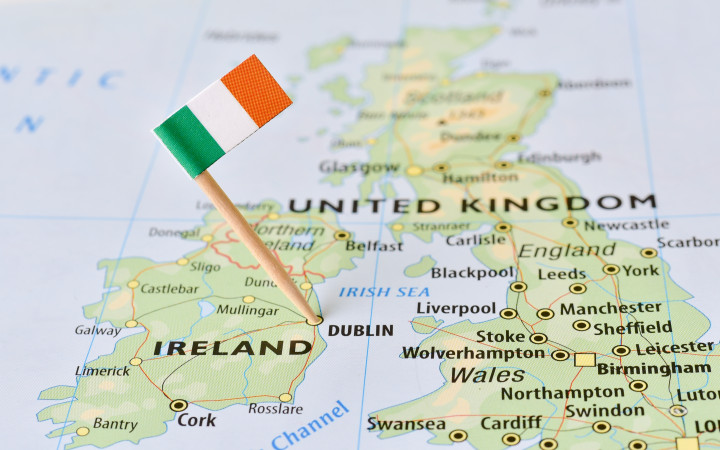Today’s Wonder of the Day was inspired by Zosia. Zosia Wonders, “What is the Irish war of independence” Thanks for WONDERing with us, Zosia!
Have you ever found Ireland on a map? If so, you know it’s part of the British Isles. The area is also home to Great Britain, which includes England, Scotland, and Wales. And, of course, much of the region is part of the United Kingdom (UK). The UK is made up of Great Britain and Northern Ireland.
Many people find the political and social structure of the British Isles a bit confusing. In today’s Wonder, we’ll look at one major 19th century event that shaped the Isles. What are we talking about? The Irish War of Independence, of course!
What led to the Irish War of Independence? Starting in 1169, Ireland was ruled by Great Britain. The two faced tension and conflict for centuries. Many times, Great Britain treated the Irish people badly.
One example of this was Ireland’s Great Famine of 1845-1852. During this emergency, a disease wiped out most of Ireland’s potato crop. At that time, about a third of Irish people relied on potatoes for most of their diet. Though it ruled the region, Great Britain did little to help feed the Irish people. As a result, around a million Irish people died from hunger and disease.
By the early 1900s, tensions came to a boiling point. Many people in Ireland called for independent rule of their country. This led to a policy called “Home Rule.” Its goal was a non-violent separation of Ireland from Great Britain. However, talks about Home Rule paused in 1914 when World War I began.
By 1916, though, separatists in Ireland were tired of waiting. Led by the Irish Republican Brotherhood, they rebelled on April 24 of that year. This was later called the Easter Rising. Great Britain crushed the uprising within a week. However, British violence against the rebels and their leaders led to even more calls for independence.
In the 1918 election, many Irish politicians supported independence. They ran for office as part of a political party called Sinn Feinn. In English, this name means “We Ourselves.“ The Sinn Feinn party won most of the Irish seats in British Parliament. However, these representatives refused to report to Great Britain. Instead, they set up an Irish Parliament in Dublin in January 1919.
At the same time, the Irish Republican Brotherhood joined with other rebel groups. They formed a new group called the Irish Republican Army (IRA). It fought for Irish independence. The IRA carried out guerrilla attacks against British forces in Ireland.
The IRA aimed many of its attacks at the Royal Irish Constabulary (RIC). This was a police force in Ireland that was controlled by Great Britain. An early IRA attack targeted two RIC officers on January 19, 1919. This began the Irish War of Independence.
The IRA targeted property owned by the British government. This included buildings such as police and tax offices. It also went after British authority figures. Members of the IRA were volunteers who relied on support from the local civilians. Many locals gave IRA members shelter and helped them escape authorities.
The fighting reached its climax on November 21, 1920. That morning, the IRA attacked British Intelligence officers in Dublin. They killed 14 people and wounded five. Later that day, British troops shot into a civilian crowd of Irish fans at a football match. Another 14 people were killed, with 65 wounded. This day is remembered as Bloody Sunday.
Following Bloody Sunday, violence continued to grow. Irish people, angry at British violence against civilians, refused to give in. Another surge of violence followed Great Britain’s attempt to dissolve the Irish Parliament in May 1921.
Finally, Ireland and Great Britain reached a truce on July 11, 1921. That December, they signed the Anglo-Irish Peace Treaty. This gave Ireland the power to self-govern, establishing the Irish Free State. However, six counties in the north of Ireland remained part of the United Kingdom. This region became known as a separate body called Northern Ireland.
The Irish Free State continued to work for full independence. It finally accomplished this in 1949, becoming the Republic of Ireland. After a long fight, Ireland was finally free from Great Britain. The Irish War of Independence is just one example of a nation fighting for the right to govern itself. What others can you think of?
Standards: C3.D2.Civ.12, C3.D2.Civ.14, CCRA.R.4, CCRA.L.3, CCRA.L.6, CCRA.R.10, CCRA.R.1, CCRA.SL.3, CCRA.L.1 CCRA.W.1, CCRA.SL.1, CCRA.L.2 CCRA.W.2, NCAS.A.1, NCAS.A.2, NCAS.A.3










